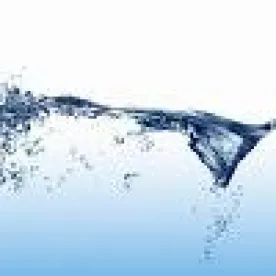I. Two federal initiatives promote the conversion of existing dams for small scale hydropower facilities in Wisconsin
Two new federal initiatives could spur conversions of existing dams for hydroelectric generation in Wisconsin:
1. The Hydropower Regulatory Efficiency Act of 2013 (HREA); and
2. Energy Department announcement of $3.6 million for hydroelectric production incentives
A. The Hydropower Regulatory Efficiency Act of 2013
The federal government has estimated that only 3 percent of the 80,000 dams in the United States currently generate electricity. This unused conversion capacity represents an enormous potential for adding up to 60,000 MW of new electrical generation capacity in the United States.
It is this untapped source for electrical generation which prompted Congress to enact the HREA. This Act is designed to reduce the burdens of regulation by the federal government and is intended to significantly streamline the permitting process for small hydroelectric generation conversions for existing dams. In particular, the HREA has the following important ramifications for hydroelectric permitting:
• Conduit facility licensing exemptions. It excludes from Federal Energy Regulatory Commission (FERC) jurisdiction entirely hydro projects under 5 MW that qualify as “conduits”. A conduit facility generates electrical power using only the hydroelectric potential of non-federally owned conduits, such as a tunnel, canal, pipeline, aqueduct, flume, ditch or similar manmade water conveyance that is operated for the distribution of water for electrical, municipal and industrial consumption and is not primarily for the generation of electricity. Although exempt from FERC licensing, such qualifying facilities still need to provide a Notice of Intent with FERC prior to construction.
• Increased thresholds for small electric power projects. The Act increases the maximum small hydroelectric licensing provisions in Section 405 of the Public Utility Regulatory Policies Act of 1978 to 10 MW from the current limit of 5 MW.
• Extension of term for preliminary permits. The Act provides FERC the ability to extend preliminary permits two years beyond their current three-year terms authorized under Section 5 of the Federal Power Act.
• Two year license feasibility study. The law requires FERC to examine the feasibility of a two- year licensing process for adding hydropower to non-powered dams and for closed pump storage projects that are not subject to the license exemptions.
FERC staff has updated its commission website to provide guidance on these new provisions and has begun processing applications under this new law. See http://www.ferc.gov/industries/ hydropwer/indus-act/effeciency-act.asp.
B. Hydroelectric production incentives
The Energy Policy Act of 2005 includes a hydroelectric production incentive under Title II Renewable Energy, Section 242. This section establishes incentive payments to eligiblefacilitiesforthedevelopmentofnew hydro power at existing dams and conduits for 1.8 cents per KW hour. Facilities must be owned or operated by non-federal entities or constitute new hydropower development of federal dams by non-federal entities.
The incentive period to receive payments is 10 fiscal years (beginning the first eligible fiscal year occurring after Aug. 8, 2005). Maximum payments are $750,000 per calendar year. Payments are based on the number of KW hours of hydroelectric energy generated.
The Department of Energy (DOE) received funding for the first time for this incentive in fiscal year 2014. DOE is now accepting applications from qualified facility owners and operators for hydroelectric electricity generation installed in calendar year 2013.
Under this DOE incentive program, the term “existing dam or conduit” means any dam or conduit the construction of which was completed before Aug. 8, 2005 and which does not require any construction or enlargement of empowerment or diversion structures in connection with the installation of the electrical-generating device.
A qualified electrical facility may receive payments under Section 242 for a period of 10 fiscal years. The period begins with the fiscal year in which electrical energy generated from the facility is first eligible for such payments.
The full description of this program can be found in the Federal Register Notice at the following link: http://energy.gov/eere/water/ downloads/federal-register-notice-epact- 2005-section-242-hydroelectric-incentive- program.
Owners of existing dams and developers of hydroelectric power in Wisconsin should seriously consider the incentives afforded by these two new federal programs.
II. Wisconsin Legislative hearing on Clean Power Plan draws significant interest
On Wednesday, Jan. 28, 2015, a joint informational hearing was held in the state capitol in Madison to familiarize the legislature with EPA’s Clean Power Plan rule and its potential impacts to Wisconsin. This EPA rule was the subject of a previous Godfrey & Kahn newsletter (see. http://www.gklaw.com/resources/ documents/Environmental%20101614.pdf). The following are some highlights of the testimony at the hearing:
1. Need for state legislation. Both Bart Sponseller, the Air Bureau Director of the Wisconsin Department of Natural Resources, and Ellen Nowak, Commissioner for the Public Service Commission, testified that the proposed EPA rule’s current timeline could require a fast implementation. As a result, both testified that it would be beneficial for the legislature to be familiar with the proposed EPA rule.
2. Costs to customers. Commissioner Nowak discussed the $3.3 to $13.4 billion estimate cost to rate payers included in the joint comments filed by Wisconsin Department of Natural Resources (WDNR) and the Wisconsin Public Service Commission (PSC) to EPA. Commissioner Nowak stated that the cost estimate only includes production and does not include costs such as those required by new pipelines, transmission lines, etc. Representatives of the Wisconsin Manufacturers in Commerce and the Wisconsin Industrial Energy Group expressed concerns at the informational hearing about the rate increases that may be necessary to meet the requirements of the Clean Power Plan and how they would impact businesses throughout the state. The Wisconsin Industrial Energy Group (WIEG) representative stated that the three largest contributors to the bottom line for their members are raw materials, labor and energy. For facilities with large energy bills, rate increases can be in the millions of dollars which, in a competitive industry, can place Wisconsin businesses at a competitive disadvantage.
3. Stranded costs. Commissioner Nowak testified about the “stranded cost.” She explained that stranded costs were incurred for pollution control technology upgrades and for which rate payers are currently paying for the cost of technology, yet these facilities may be shuttered early. Even if the rule requires these facilities to be shuttered early, rate payers will be required to continue paying off expensive pollution control technology installed at these “moth balled” facilities.
4. Baseline carbon emissions. There was also significant discussion at the informational hearing about the Clean Power Plan’s proposed 2012 baseline for determining total carbon emissions. Several groups, including WDNR, PSC, the Wisconsin Utilities Associations, Wisconsin Manufacturers and Commerce (WMC) and the WIEG stated that because Wisconsin was an early adopter of renewable fuel standards and energy efficiency programs, Wisconsin has already reduced carbon emissions. However, under the proposed rule, these testifiers stated that Wisconsin will not receive credit for these early reductions and therefore Wisconsin is now being asked to do more under the proposed rule. These groups testified about establishing an earlier baseline year, average baseline or some type of equity built in to the proposed rule to adjust for Wisconsin’s early actions for carbon reductions.
5. 34 percent carbon reduction goal. During the information hearing, there were also considerable questions and discussions as to whether the Clean Power Plan’s proposed 34 percent reduction for Wisconsin was achievable with the four building blocks identified by EPA in the proposed rule. The Utility Associations testified that their facilities are already very efficient and perhaps could gain 1 percent to 2 percent more efficiency, but certainly not the 6 percent efficiency highlighted in the EPA building block in the proposed rule.
With respect to the renewable fuel building block proposed by EPA and the Clean Power Plan, the legislators questioned whether out-of-state renewables would count towards achieving Wisconsin’s goal of a 34 percent reduction of carbon emissions. WDNR and PSC representatives stated it was unclear that the proposed rule would allow such out-of-state renewables to count for emission credits and that their comments to EPA on the proposed rule sought clarification on this point.
6. Potential litigation. WMC testified about the grounds for opposing the proposed rule because of concerns about increased rates. In particular, WMC outlined three reasons why the rule allegedly does not comply with the Clean Air Act (CAA). First, EPA’s authority under Section 111(d) is limited to regulating a facility inside the fence lines of the coal fired facility targets (three of the four building blocks proposed by EPA in the Clean Power Plan occur far beyond the fence line). Second, WMC commented that a prerequisite to regulating under Section 111(d) is a requirement to establish regulations for new facilities under Section 111(b). EPA has proposed a rule under Section 111(b), but has not finalized it yet. Third, WMC argued that if a facility is subject to regulation under Section 112 of the CAA, EPA cannot regulate that facility under Section 111(d) of the CAA. WMC indicated that utilities are already regulated under the utility Maximum Achievable Control Technology (MACT) standard promulgated under Section 112 and the Section 111(d) regulation is not consistent with the requirements of the CAA.
7. Favorable testimony. The only invited representative at the informational hearing who testified in favor of the proposed Clean Power Plan was Keith Roepell from Clean Wisconsin. Mr. Roepell stated that the overall carbon regulation is needed but there certainly are issues to be worked out in this rule. Mr. Roepell testified that rates may increase but not near the 19 percent figure that legislators were citing during the informational hearing. This 19 percent figure that was discussed frequently during the informational hearing is based upon a report released a few days ago from the MacIver Institute. A copy of the MacIver report can be found at the following link: http://www.maciverinstitute.com/2015/01/epa-regulations-to-increase- wisconsin-electricity-prices-19-eliminate-20995-jobs-by-2030/.
It is obvious that the EPA’s proposed Clean Power Plan is generating a significant amount of controversy and concern in the state of Wisconsin. It will be important for the business community to track the final form of the EPA’s Clean Power Plan rule which is expected to be finalized in June 2015.



 />i
/>i

